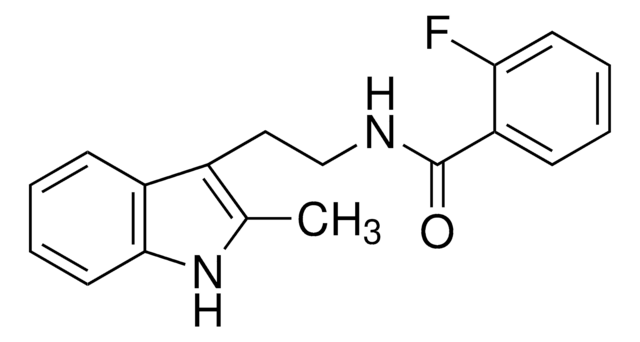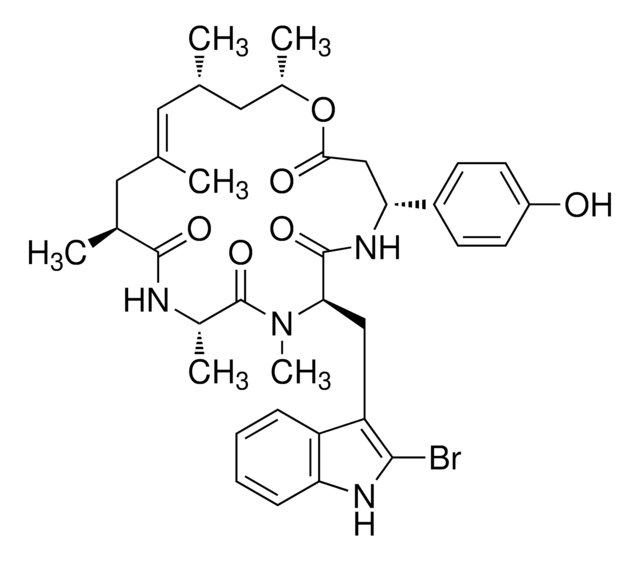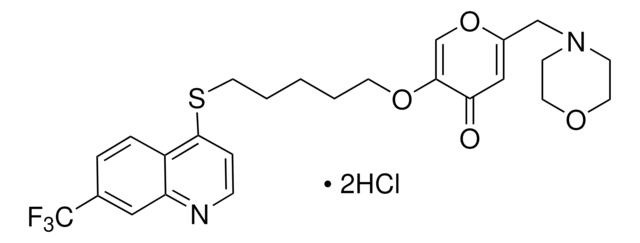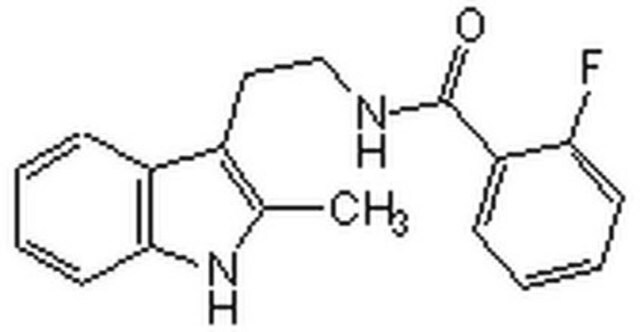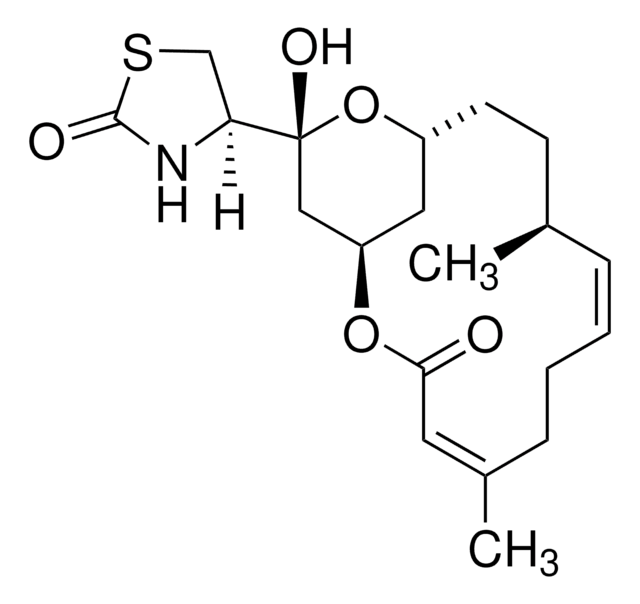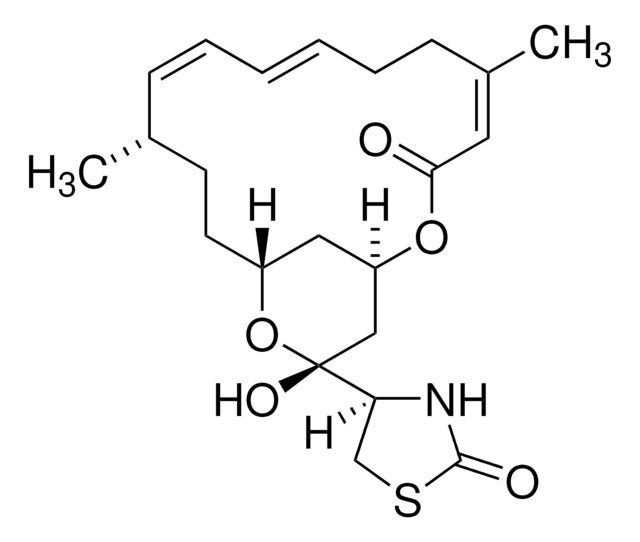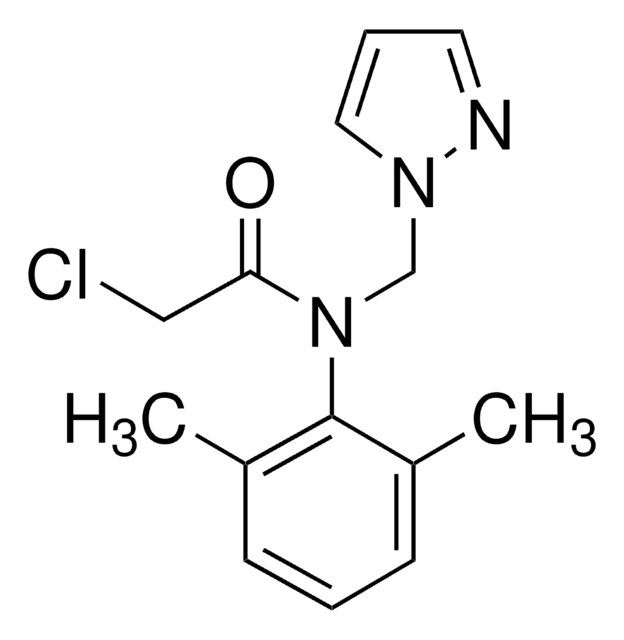S4826
SMIFH2
≥98% (HPLC)
Synonim(y):
1-(3-Bromophenyl)-5-(2-furanylmethylene)dihydro-2-thioxo-4,6(1H,5H)-pyrimidinedione
About This Item
Polecane produkty
Poziom jakości
Próba
≥98% (HPLC)
Postać
powder
warunki przechowywania
protect from light
kolor
light yellow to yellow-green
rozpuszczalność
DMSO: 20 mg/mL, clear
temp. przechowywania
2-8°C
InChI
1S/C15H9BrN2O3S/c16-9-3-1-4-10(7-9)18-14(20)12(13(19)17-15(18)22)8-11-5-2-6-21-11/h1-8H,(H,17,19,22)/b12-8+
Klucz InChI
MVFJHEQDISFYIS-XYOKQWHBSA-N
Zastosowanie
Działania biochem./fizjol.
Kod klasy składowania
11 - Combustible Solids
Klasa zagrożenia wodnego (WGK)
WGK 3
Temperatura zapłonu (°F)
Not applicable
Temperatura zapłonu (°C)
Not applicable
Certyfikaty analizy (CoA)
Poszukaj Certyfikaty analizy (CoA), wpisując numer partii/serii produktów. Numery serii i partii można znaleźć na etykiecie produktu po słowach „seria” lub „partia”.
Masz już ten produkt?
Dokumenty związane z niedawno zakupionymi produktami zostały zamieszczone w Bibliotece dokumentów.
Klienci oglądali również te produkty
Nasz zespół naukowców ma doświadczenie we wszystkich obszarach badań, w tym w naukach przyrodniczych, materiałoznawstwie, syntezie chemicznej, chromatografii, analityce i wielu innych dziedzinach.
Skontaktuj się z zespołem ds. pomocy technicznej